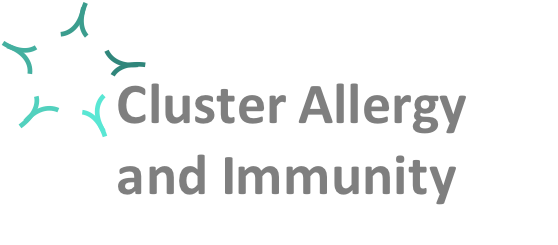News
New DFG funding for research on immune regulatory helminth proteins
![[Translate to Englisch:] ZAUM group leader Julia Esser- von Bieren /quelle HMGU)](/fileadmin/CAI/IMG/externe_Bilder/Julia_Esser-von_Bieren.jpg)
Metabolites of the polyunsaturated fatty acid (PUFA) arachidonic acid (“eicosanoids”) play central and versatile roles in type 2 immune responses e.g. in allergy and asthma. However, current therapies fail to sufficiently target these important mediators. Julia Esser-von Bieren’s team at the ZAUM aims at identifying new molecules, which can regulate eicosanoid-driven airway inflammation. They now received renewed DFG funding to explore the mechanism of action of a newly identified immune- and eicosanoid-regulatory helminth protein. The team is studying potential anti-inflammatory effects of this protein in primary human immune cells and in experimental models of house dust mite allergy and helminth infection.
Publications:
Immune-regulation and -functions of eicosanoid lipid mediators. Esser-von Bieren J. Biol Chem. 2017 Oct
House dust mite drives proinflammatory eicosanoid reprogramming and macrophage effector functions. Henkel FDR, Friedl A, Haid M, Thomas D, Bouchery T, Haimerl P, de Los Reyes Jiménez M, Alessandrini F, Schmidt-Weber CB, Harris NL, Adamski J, Esser-von Bieren J. Allergy. 2019 Jun
ZAUM Research group: link
Martha study- prevention of allergy and asthma
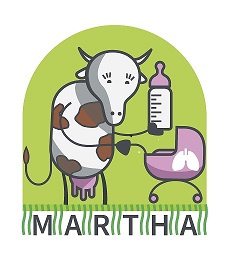
The MARTHA study initiated by Prof. Erika von Mutius is investigating the effect of differently processed milks on the development of asthma and allergies in children. This randomized trial wants to test the already well described protective "farm effect" which was partly explained by the consumption of unprocessed farm milk for an innovative prevention approach. The study team did already recruit over 580 study families.
for more information click here
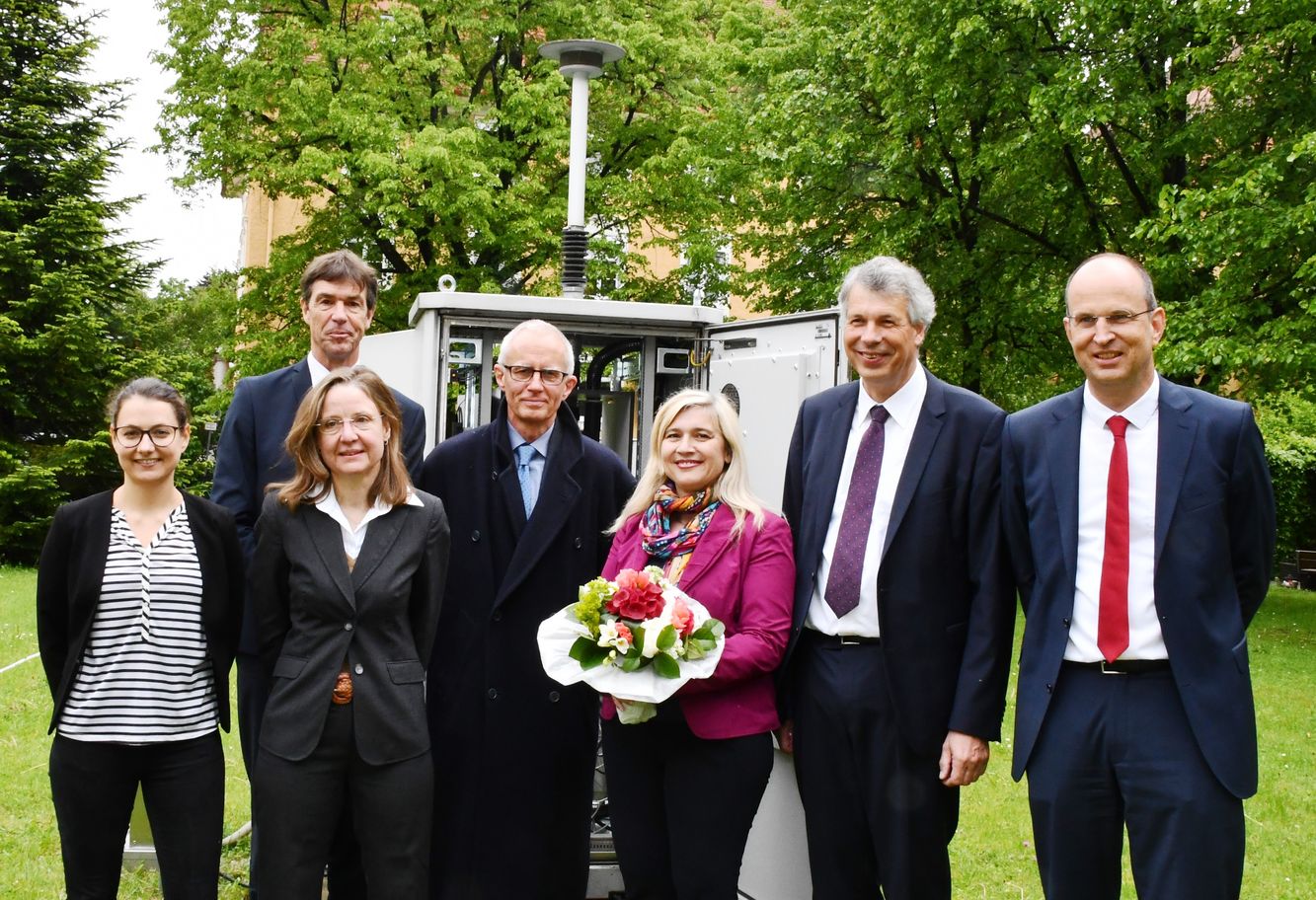
Die bayerische Gesundheitsministerin Melanie Huml startete am 22. Mai 2019 das weltweit erste elektronische Polleninformationsnetzwerk (ePIN). Es dient der präzisen Messung und zeitnahen Veröffentlichung des aktuellen Pollenflugs in Bayern. Das Projekt basiert auf umfangreichen Vordatenaten des 'Zentrums für Allergie und Umwelt' der Technischen Universität und des Helmholtz Zentrums München (ZAUM) in Zusammenarbeit mit internationalen Experten und wurde im Auftrag des bayerischen Gesundheitsministeriums in Zusammenarbeit mit dem Umweltministerium durch das Bayerische Landesamt für Gesundheit und Lebensmittelsicherheit (LGL) aufgebaut und nun betrieben.
Weitere Informationen zu ePIN finden Sie hier

A team working with Prof. Christina Zielinski at the Technical University of Munich (TUM) has demonstrated increased salt concentrations leads to the formation of Th2 cells in vitro, which are key cells in the development of allergic diseases such as atopic dermatitis. The team also detected elevated salt concentrations in the skin of patients with atopic dermatitis, which supports the growth of Staphylococcus aureus a bacterium associated with this disease.
Press release:
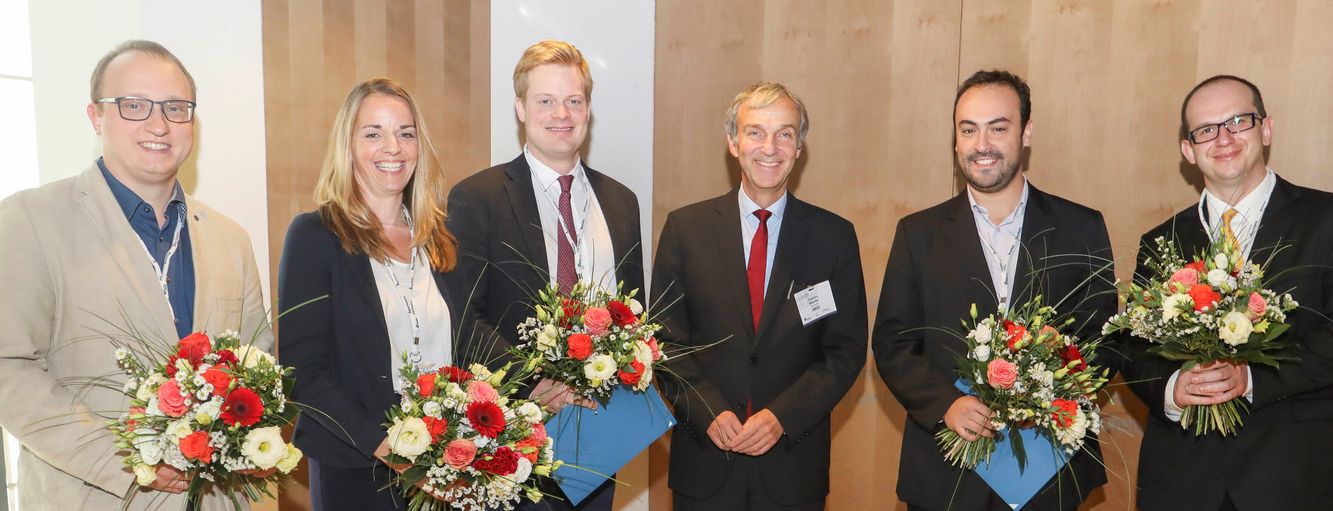
Bildquelle: DGAKI-2018
Wir gratulieren ganz herzlich:
Dr. Matthias Reiger, UNIKA-T Augsburg (links) und Jana Mehlich, Klinik und Poliklinik für Dermatologie und Allergologie der TU München (2. von links) für ihren Nachwuchsförderpreis der Siemens Healthcare Diagnostics GmbH, Eschborn und Dr. Jose Oteros aus dem ZAUM - Zentrum für Allergie und Umwelt (2. von rechts) zum Förderpreis „Spezifische Immuntherapie“ der Allergopharma GmbH & Co. KG, Reinbek.
Sie wurden für Ihre Leistungen im Rahmen der Jahrestagung 2018 der deutschen Gesellschaft für Allergologie und klinische Immunologie (DGAKI) in Dresden ausgezeichnet.
Diese Auszeichnungen stellen eine Würdigung der exzellenten Forschung im Bereich Allergie und Immunität im Großraum München dar!
Atopic dermatitis: staphylococci-dominated microbiome influence skin barrier function
Staphylococcus aureus is the dominat skin associated bacterium in atopic dermatis. A recently published Paper of CAI Researchers in cooperation with researchers from Zurich could show that this microbiome dysbiosis influence also the skin barrier function.
Publication
Altunbulakli C, Reiger M, Neumann AU, Garzorz-Stark N, Fleming M, Huelpuesch C, Castro-Giner F, Eyerich K, Akdis CA, Traidl-Hoffmann C.
J Allergy Clin Immunol. 2018 Jul
Press release TUM, August 10, 2018 (in german language)
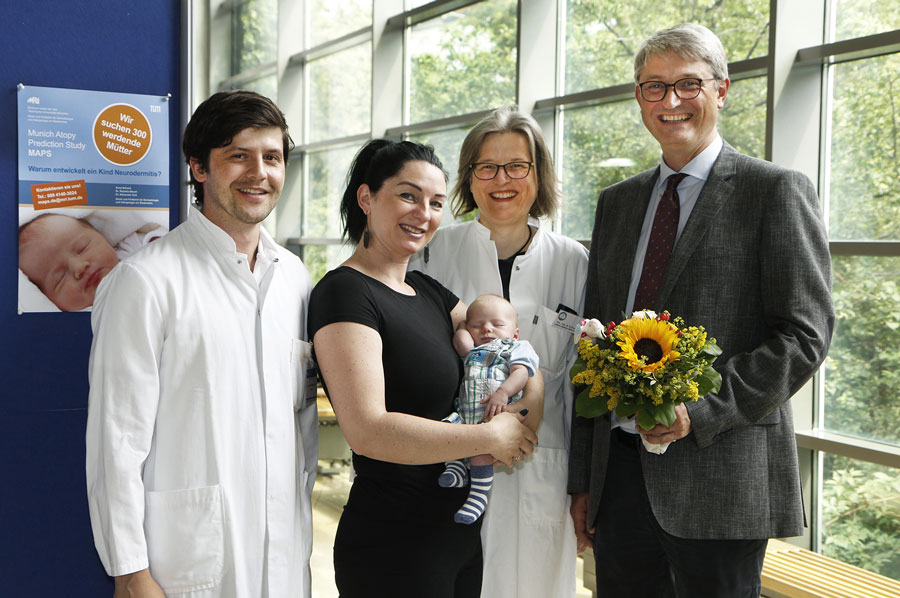
Die "Munich Atopy Prediction Study" (MAPS) untersucht Risikofaktoren für Neurodermitis bei Kindern. Hierfür rekrutiert die Klinik für Dermatologie und Allergologie insgesamt 300 schwangere Frauen, deren Kinder im Klinikum rechts der Isar zur Welt kommen und im Großraum München wohnen werden. Teilnehmende Kinder werden eng betreut und erhalten im Fall einer Erkrankung an Neurodermitis die bestmögliche Therapie durch die Ärzte der Dermatologischen Universitätsklinik am Klinikum rechts der Isar.
Neurodermitis ist eine Volkskrankheit, von der zehn bis 15 Prozent der Kinder und zwei bis drei Prozent der Erwachsenen betroffen sind – mit jährlich steigender Tendenz. Die medizinische Forschung arbeitet daran, ein besseres Verständnis für das Erkrankungsbild zu gewinnen, um bessere Therapien entwickeln zu können. Wir fragen uns, welche Faktoren das Entstehen der Krankheit beeinflussen? Welche Rolle spielen Hautbakterien, die Darmflora, die Umwelt, unsere Gene? In der MAPS-Studie suchen wir ganz gezielt nach diesen Risikofaktoren für die Entwicklung allergologischer und dermatologischer Erkrankungen.
CAI Publications
Next generation pollen monitoring and dissemination.
Buters J, Schmidt-Weber C, Oteros J.
Allergy. 2018 Aug
Russkamp D, Van Vaerenbergh M, Etzold S, Eberlein B, Darsow U, Schiener M, De Smet L, Absmaier M, Biedermann T, Spillner E, Ollert M, Jakob T, Schmidt-Weber CB, de Graaf DC, Blank S.
Toxicon. 2018 Aug
Gorlanova O, Illi S, Toncheva AA, Usemann J, Latzin P, Kabesch M, Dalphin JC, Lauener R, Pekkanen JR, Von Mutius E, Riedler J, Kuehni CE, Röösli M, Frey U; BILD and PASTURE study groups.
Allergy. 2018 Jul
Altunbulakli C, Reiger M, Neumann AU, Garzorz-Stark N, Fleming M, Huelpuesch C, Castro-Giner F, Eyerich K, Akdis CA, Traidl-Hoffmann C.
J Allergy Clin Immunol. 2018 Jul
Artemisia pollen is the main vector for airborne endotoxin.
Oteros J, Bartusel E, Alessandrini F, Núñez A, Moreno DA, Behrendt H, Schmidt-Weber C, Traidl-Hoffmann C, Buters J.
J Allergy Clin Immunol. 2018 Jul
Aglas L, Gilles S, Bauer R, Huber S, Araujo GR, Mueller G, Scheiblhofer S, Amisi M, Dang HH, Briza P, Bohle B, Horejs-Hoeck J, Traidl-Hoffmann C, Ferreira F.
J Allergy Clin Immunol. 2018 May
Dehmel S, Nathan P, Bartel S, El-Merhie N, Scherb H, Milger K, John-Schuster G, Yildirim AO, Hylkema M, Irmler M, Beckers J, Schaub B, Eickelberg O, Krauss-Etschmann S.
Sci Rep. 2018 May
Activin-A Is a Pro-Inflammatory Regulator in Type-2-Driven Upper Airway Disease.
Chaker AM, Zissler UM, Poulos N, Wagenmann M, Bas M, Gürth F, Xanthou G, Schmidt-Weber C
Int Arch Allergy Immunol. 2018
Cutaneous Barriers and Skin Immunity: Differentiating A Connected Network.
Eyerich S, Eyerich K, Traidl-Hoffmann C, Biedermann T.
2018, Trends Immunol. - Review.
Type I immune response induces keratinocyte necroptosis and is associated with interface dermatitis.
Lauffer F, Jargosch M, Krause L, Garzorz-Stark N, Franz R, Roenneberg S, Böhner A, Mueller NS, Theis FJ, Schmidt-Weber CB, Biedermann T, Eyerich S, Eyerich K.
2018, J Invest Dermatol.
The use of pharmacogenomics, epigenomics, and transcriptomics to improve childhood asthma management: Where do we stand?
Farzan N, Vijverberg SJ, Kabesch M, Sterk PJ, Maitland-van der Zee AH.
2018, Pediatr Pulmonol.
Exposure to non-microbial N -Glycolylneuraminic acid protects farmers’ children against airway inflammation and colitis.
Remo Frei, Ruth Ferstl, Caroline Roduit, Mario Ziegler Dipl-Ing, Elisa Schiavi, Weronika Barcik, Noelia Rodriguez-Perez, Oliver F. Wirz, Marcin Wawrzyniak, Benoit Pugin, Dirk Nehrbass, Marek Jutel, Sylwia Smolinska, Patrycja Konieczna, Christian Bieli, Susanne Loeliger, Marco Waser, Göran Pershagen, Josef Riedler, Martin Depner, Bianca Schaub, Jon Genuneit, Harald Renz, Juha Pekkanen, Anne M. Karvonen, Jean-Charles Dalphin, Marianne van Hage, Gert Doekes, Mübeccel Akdis, Charlotte Braun-Fahrländer, Cezmi A. Akdis, Erika von Mutius, Liam O’Mahony, Roger P. Lauener.
2017, J Allergy Clin Immun.
Cabinet approves the electronic pollen information network "ePIN"
Prof. Dr. Jeroen Buters, ZAUM
ePIN-network map press release
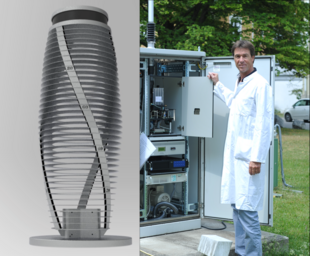
The Pollen Indicator processes the data provided by the network of 8 robotic pollen monitors in Bavaria with just a 3hrs time lag.
Bavaria is world-wide the first state that implemented a network of pollen monitors that, by image recognition, determine the quantity of pollen in the air. This data is provided online for free. The Pollen Indicator connects to the pollen robot in Munich and displays the concentrations of different pollen currently in the air in Munich. Vertically the expected level of allergic symptoms is displayed, horizontally the exact concentration of airborne pollen is displayed.
ZAUM expects that this Pollen Indicator helps Bavarian Citizens to better cope with their allergic diseases and to create awareness, by delivering actual pollen counts.
New Allergen of insect venom discovered
CAI researcher of the TUM - Department Dermatology and Allergology and the Center of Allergy and environment (ZAUM) in cooperation with researcher from Spain, Luxembourg and Denmark recently discovered Pol d 3, a dipeptidyl peptidase, as the main allergen of the Polistes dominula venom.
The insect Polistes dominula is widespread in Southern Europe as well as in the United States but it will spread due to the climate change also to Western Europe. The discovery of Pol d 3 might form the basis for a proper diagnosis of Polistes venom allergy in the future.
